ARICNS data Radius 675,100 km (0.97 R☉) | Surface temperature 5,585 K Magnitude 4.74 Apparent magnitude (V) 4.74 | |
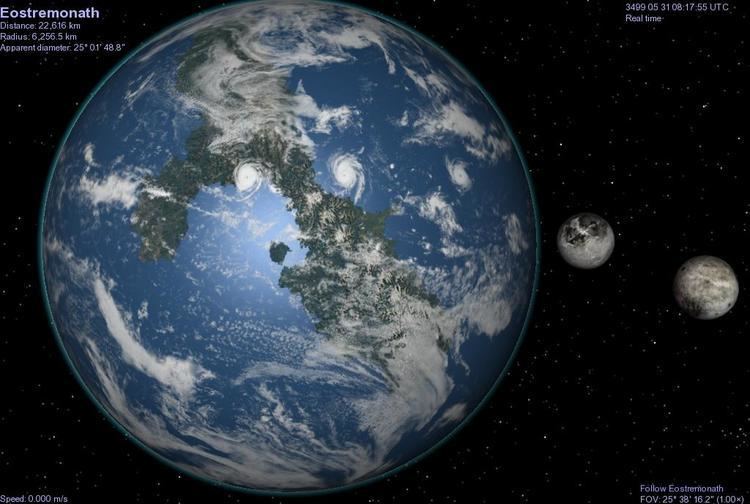 | ||
Mass 1.88 × 10^30 kg (0.945 M☉) Similar 70 Virginis, 82 G Eridani, HD 69830 | ||
Extrasolar planet 61 virginis b 720p
61 Virginis (abbreviated 61 Vir) is the Flamsteed designation of a G-type main-sequence star (G7V) slightly less massive than the Sun (which is G2V), located about 27.9 light-years away in the constellation of Virgo. The composition of this star is nearly identical to the Sun.
Contents
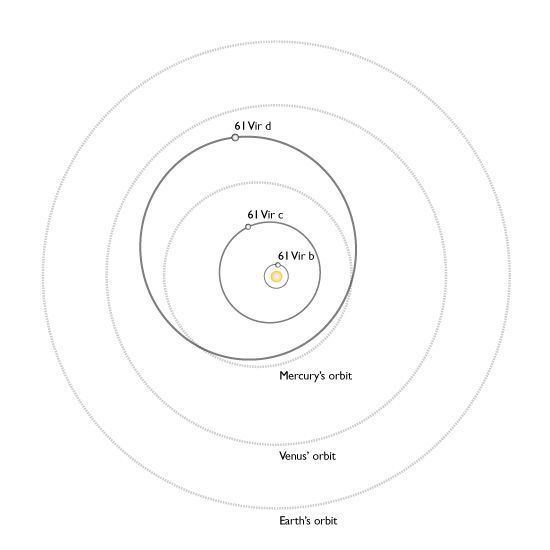
61 Virginis (G7V) is the first well-established main-sequence star very similar to the Sun with a potential Super-Earth, though COROT-7 (a borderline orange dwarf) is arguably the first.
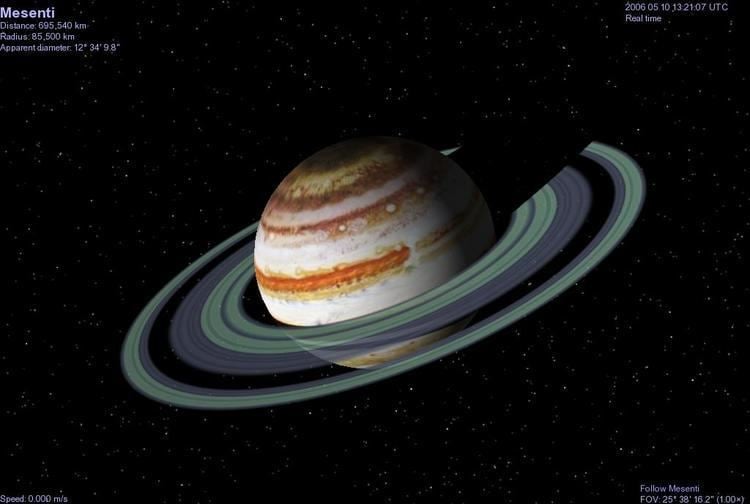
Description
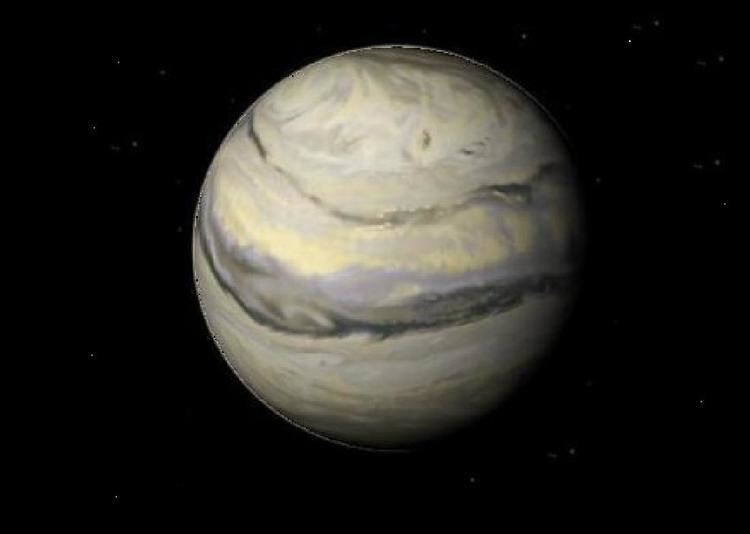
61 Virginis is a fifth-magnitude G-type main-sequence star with a stellar classification of G7 V. It is faint but visible to the naked eye south and east of the bright star Spica in the zodiac constellation of Virgo. The designation 61 Virginis originated in the star catalogue of English astronomer John Flamsteed, as part of his Historia Coelestis Britannica. An 1835 account of Flamsteed's work by English astronomer Francis Baily noted that the star showed a proper motion. This made the star of interest for parallax studies, and by 1950 a mean annual value of 0.006″ was obtained. The present day result, obtained with data from the Hipparcos satellite, gives a parallax of 116.89 mas, which corresponds to a physical separation of 27.9 light years from the Sun.
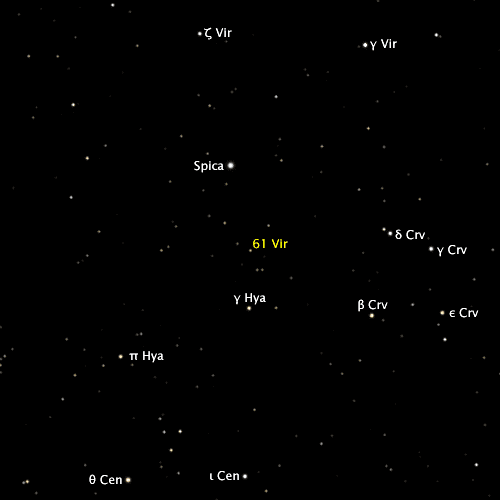
This star is similar in physical properties to the Sun, with around 95% of the Sun's mass, 98% of the radius, and 85% of the Luminosity. The abundance of elements is also similar to the Sun, with the star having an estimated 95% of the Sun's proportion of elements other than hydrogen and helium. It is older than the Sun at around 6.1–6.6 billion years of age, and is spinning with a leisurely projected rotational velocity of 4 km/s at the equator. On average, there is only a low level of activity in the stellar chromosphere and it is a candidate for being in a Maunder minimum state. But the star was suspected as variable in 1988, and a burst of activity was observed between Julian days [24]54800 (29 November 2008) and 55220 (23 January 2010).
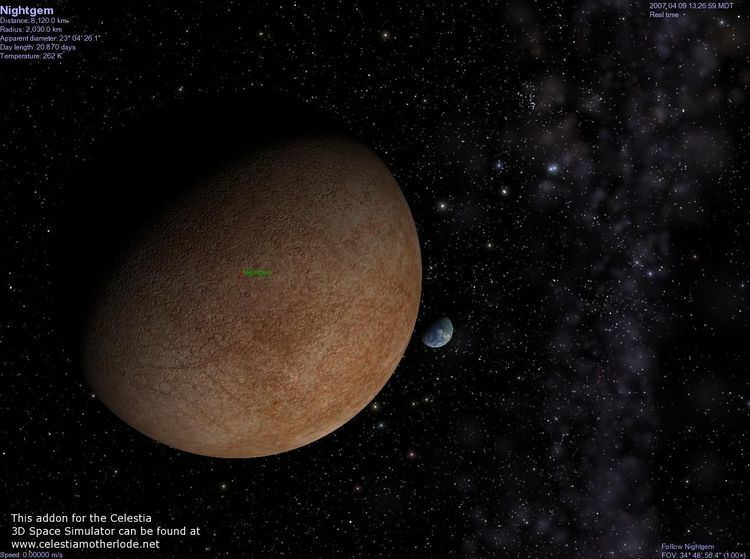
The space velocity components of this star are U = –37.9, V = –35.3 and W = –24.7 km/s. 61 Vir is orbiting through the Milky Way galaxy at a distance of 6.9 kpc from the core, with an eccentricity of 0.15. It is believed to be a member of the disk population.
Planetary system
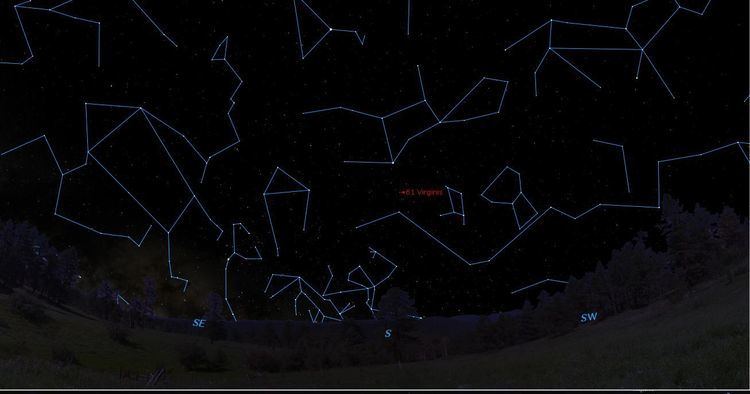
The ecliptic of the 61 Virginis system, as inferred from its dust disc, is inclined to the Solar system at 77°. The star itself is probably inclined at 72°.

In 1988, a study surmised that 61 Virginis was a "possible variable", but no companions were then found. A subsequent study, over eleven years, also failed to find any companion up to the mass of Jupiter and out to 3 AU.
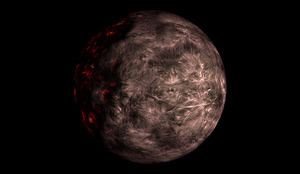
On 14 December 2009, scientists announced the discovery of three planets with masses between 5 and 25 times that of Earth orbiting 61 Virginis. The three planets all orbit very near the star; when compared to the orbits of the planets in the Solar System, all three would orbit inside that of Venus. The outermost of these three, d, has not yet been confirmed in the HARPS data.
A survey with the Spitzer Space Telescope revealed an excess of infrared radiation at a wavelength of 160 μm. This indicated the presence of a debris disk in orbit around the star. This disk was resolved at 70 μm. It was then thought to correspond to an inner radius of 96 AU from the star and outer radius at 195 AU; it is now constrained 30 to over 100 AU. The total mass of the disk is 5 × 10−5 the mass of the Earth.
On 27 November 2012, the European Space Agency declared that the debris disc (like Gliese 581's, recently found) has "at least 10 times" as many comets as does the Solar system.
As of 2012, "planets more massive than Saturn orbiting within 6 AU" were ruled out. The ESA has further ruled out Saturn-mass planets beyond that.
Additional data is needed to confirm the possibility of more sub-Saturn planets between 0.5 (really, 0.3) and 30 AU from the star. An Earth-mass planet in the star's habitable zone (which would still be too small to detect with current technology) remains possible.
View from 61 Virginis
The Sun is barely visible from the system as a small star close to the much brighter Sirius. Arcturus (magnitude -1.01) is the brightest star of the night sky.
